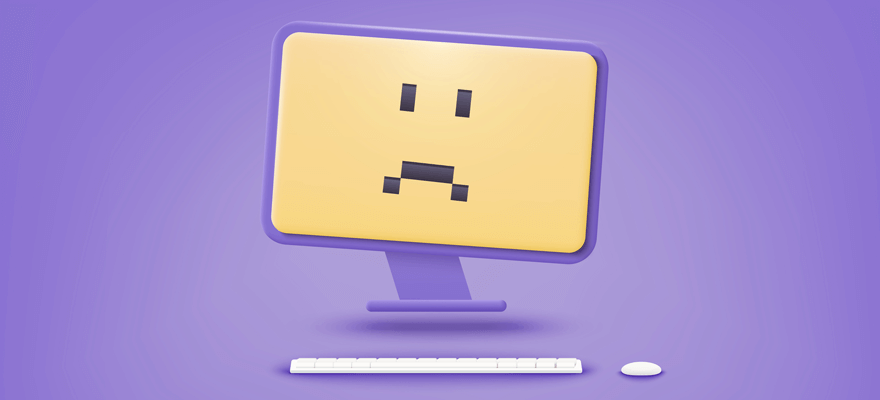HR system down again? It doesn’t have to be that way
Legacy HR systems always seem to let you down at the worst possible time, don’t they? Crashing out on a Monday morning at 9 AM, just when you need them the most. But it shouldn’t be that way. An HR system should be as reliable and loyal as “Dick” Winters (Band of Brothers) … What can I say? We’ve got a war theme going on today.

You’ll want an American accent for the voice in your head for this bit—preferably military style:
Cliff Wolcott: 6-1 going down, 6-1 going down.
Col. Matthews: Super 6-1 is going down. He is going down.
[Various radio chatter repeating “6-1 going down”, showing the Rangers on the ground looking up in disbelief at the spiralling chopper]
Cliff Wolcott: Hold on!
[6-1’s crew are bracing for impact]
Cliff Wolcott: [Chopper strikes a building] …Ahhh!
[6-1 crashes, blades flying everywhere]
Col. Harrell: We got a Black Hawk down. We got a Black Hawk down.
Col. Matthews: Super 6-1 is down. We got a bird down in the city.
Unidentified Voice: Super 6-1 is on the deck now.
Gen. Garrison: Get an MH-6 on site, check for survivors. Send in the S.A.R. bird. I want ground forces to move and secure a new perimeter around that crash site. Can you guide the convoy in there?
Matthews: Roger that.
Sorry for throwing you straight into the chaos, with a script snippet from Black Hawk Down.
But sometimes, that’s how Monday morning feels isn’t it? Especially when, once again, your HR system has crashed at the worst possible moment.
Just another manic Monday?
It doesn’t have to be.
Here’s where SenseHR ziplines in and saves you from the warzone.
Securing a perimeter… 3… 2…1
Why do bad things happen to good people managers?
Because they’re using the wrong tools. Plain and simple.
And it’s no coincidence that your HR system lets you down at the worst possible moments. It hasn’t become a self-aware saboteur—it just can’t handle the volume of activity.
That’s because too many legacy software solutions are still using a traditional on-premise server architecture, or even just migrating that design to the cloud through Infrastructure-as-a-Service. In ‘non-engineer-speak’, that means that software providers have to estimate how much computing power they will need, based on the number of customer companies using the software, the total number of employees each one has, and the number of users registered to each account.
In the days of transactional HR—before strategy, and human-centric practices, and self-service portals for workers, and in-system document management, and flexible working hours, and multiple time zones, and… well…you know… ALL the things that HR can deal with now—this guessing game worked pretty well. HR software companies could accurately estimate how much computing power each customer would need, when their busiest times would be, and how many administrative users they would have. And if the demand grew, they simply threw another shrimp on the barbie more RAM and more processors at the server. Job done.
But times have changed.
Businesses and workforces are no longer the predictable, same-day-every-day entities that they used to be. Worker numbers can change dramatically from one day to the next, even from one hour to the next, with customer demand—just think about companies like Uber or Deliveroo. Every employee at Tesco—that’s over 200,000 people—might suddenly want to log in, at the same time, to view an impactful policy change. There might be hourly activity spikes for global companies, as 9 AM makes its way across the globe. Or a big project might require the introduction of a third-party contractor company and all their teams.
Legacy HR systems don’t have the flexibility or responsiveness to keep up with that kind of changeable demand. If they get too much high volume or unexpected activity, they just Black Hawk Down… on a Monday morning, at Christmas, during an audit. Whenever.
They can’t even keep up with the normal 9 AM rush.
What can?
Glad you asked and the answer is simple. Next-gen HR solutions like ours will do the job.
Unlike the systems of yore, next-gen systems use a serverless architecture. Again, in non-engineer-speak that means they have the same sort of scaling abilities as the expanding universe, except even better because we can also scale down again.
Did they just say that their software is better at scaling than the Universe? Yes, yes, we did. And it is.
Because our system will respond instantly, based on the number of people logging in. And whether that’s one person or one billion people, it won’t slow down. It won’t falter… No Sun’s will explode.
And we can pass these benefits onto you too because our customers only pay for the people that are registered on the system. Scale down your users, and we’ll scale down your payments.
How?
That’s the elastic power of cloud computing. As traffic increases or decreases, the virtual infrastructure automatically adds or removes resources. So, on Monday morning our SaaS infrastructure will create an instance, or temporary virtual server, distribute the traffic over it (load balancing), then, as the peak decreases, the added virtual servers are removed.
And because we can magically seamlessly migrate between servers, we can promise high reliability and stability with unbeatable uptimes. Put that together with our security, backups, and disaster recovery measures and Monday morning warzones will be no more.
Alternatively, you can stick with your legacy system. Every Monday morning it will get increasingly worse. It might even get bad enough, that people start to leave. And then your HR system will be OK again… problem solved… sort of.
